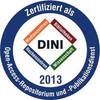Preview |
PDF, English
- main document
Download (6MB) | Terms of use |
Abstract
Mixed carbon-helium beams have recently been proposed for range verification in carbon ion therapy. Helium and carbon ions have approximately the same mass-to-charge ratio, and thus they can be accelerated together to the same velocity (energy per nucleon). In this method, a small helium fluence is added to the therapeutic carbon beam, enabling simultaneous carbon treatment and helium imaging as the helium ions have three times the range of the carbon ions and thus can exit the patient distally. This thesis investigates the implications for treatment planning if such online helium radiographs were available. For this purpose, a software framework for dose calculation and optimization of mixed beam treatment plans along with simulation of the corresponding helium radiographs was developed. Therefore, the open-source treatment planning toolkit matRad was extended. The framework was applied to abdominal and lung patients, investigating the viability of the helium range. In most investigated patient cases, at least one treatment energy had insufficient helium range. To ensure adequate helium range that is also within the sensitive range of the detection system, different planning strategies were explored and incorporated in the treatment planning framework. All investigated planning strategies successfully ensured a high enough helium range while maintaining a low helium dose and a satisfactory mixed carbon-helium dose. The use of range snifters also increased the amount of detectable helium spots. Potential use cases of the mixed beam method were investigated by verifying the patient position during treatment for a prostate patient and verifying the breathing phase in a lung patient. The mixed beam approach shows potential for real-time treatment monitoring, allowing visualization of the treated patient’s anatomy. The developed framework supports further experimental validation and clinical adaptation, offering a promising advancement for range-guided radiotherapy.
| Document type: | Dissertation |
|---|---|
| Supervisor: | Seco, Prof. Dr. Joao |
| Place of Publication: | Heidelberg |
| Date of thesis defense: | 23 July 2025 |
| Date Deposited: | 07 Aug 2025 12:53 |
| Date: | 2025 |
| Faculties / Institutes: | The Faculty of Physics and Astronomy > Institute of Physics |
| DDC-classification: | 530 Physics |









